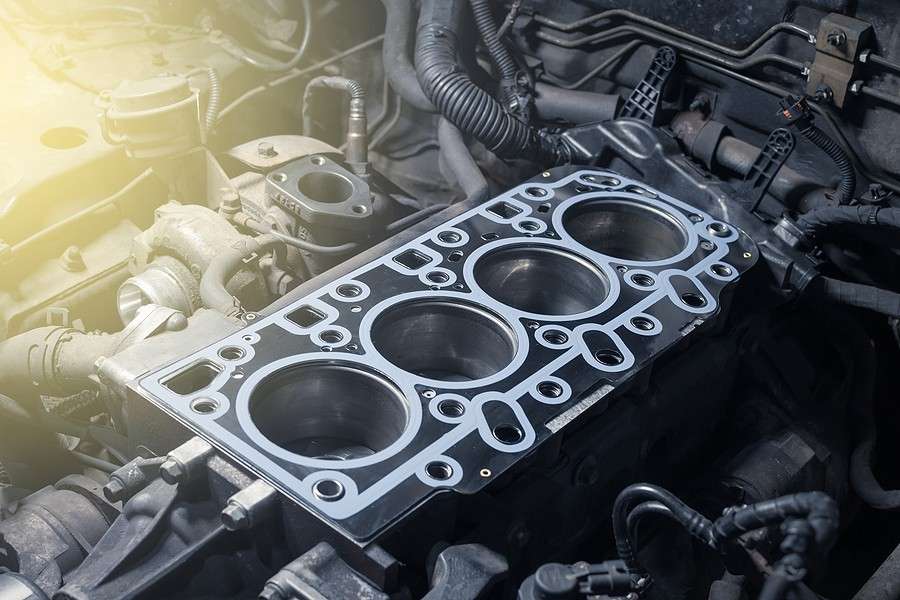Hey there, DIY gearheads and car enthusiasts! If you're revved up about taking care of your ride and want to avoid costly repairs at the mechanic's shop, you're in the right place. In this blog post, we're going to dive into some major engine problems that can leave you stranded on the side of the road. But don't worry – just like my buddy ChrisFix, we're going to break them down and show you how to tackle these issues head-on. So, grab your toolbox and let's get started!
**Problem #1: The Dreaded Check Engine Light (CEL)**
Alright, let's start with the big one – the Check Engine Light (CEL). It's like the Bat-Signal for car trouble, and it can mean a myriad of issues. But before you panic, remember that not all CELs are created equal.
*Diagnostic Approach:*
1. **OBD-II Scanner**: The first step is to invest in an OBD-II scanner, which you can get for less than a tank of gas. Plug it into your car's OBD port (usually under the dashboard), and it'll spit out a code that'll give you a clue about what's wrong.
2. **Code Interpretation**: Don't sweat it if the code seems like a foreign language. Many auto parts stores offer code reading services for free. Write down the code, and then look it up online or ask for help at a forum.
3. **Visual Inspection**: Sometimes, it's a simple fix like a loose gas cap or a worn-out spark plug wire. Give your engine bay a visual inspection to catch any obvious issues.
4. **DIY Repairs**: Depending on the code, you can often handle the repair yourself. Whether it's replacing an oxygen sensor or cleaning the mass airflow sensor, ChrisFix-style tutorials can guide you through the process step by step.
**Problem #2: Overheating Engine**
Your engine's temperature gauge creeping into the red zone is a cause for concern. Overheating can lead to severe engine damage if not addressed promptly.
*Diagnostic Approach:*
1. **Coolant Level Check**: Pop the hood and check your coolant reservoir. If it's low, top it off with the manufacturer-recommended coolant mix.
2. **Radiator Inspection**: Look for visible leaks or damage in your radiator. If you spot any, that's your culprit.
3. **Thermostat Test**: A stuck thermostat can cause overheating. Remove it, test it in a pot of boiling water, and replace if necessary.
4. **Cooling Fans**: Ensure that your cooling fans are running as they should. If they're not, a faulty fan motor or relay might be to blame.
**Problem #3: The Dreaded Misfire**
Is your engine sputtering and shaking like it's had one too many cups of coffee? You might be dealing with a misfire, and it's time to roll up your sleeves.
*Diagnostic Approach:*
1. **Scan for Trouble Codes**: Use your trusty OBD-II scanner to check for misfire codes. These will tell you which cylinder is causing trouble.
2. **Ignition Components**: Inspect your spark plugs, ignition coils, and spark plug wires. Worn-out components can lead to misfires.
3. **Fuel Injectors**: Dirty or clogged fuel injectors can also cause misfires. Consider using a fuel injector cleaner to see if it helps.
4. **Compression Test**: If all else fails, perform a compression test to check the health of your engine's cylinders.
**Problem #4: Oil Leaks**
Oil leaks can be messy and, if ignored, can lead to engine damage. Luckily, they're often not as daunting to fix as they seem.
*Diagnostic Approach:*
1. **Locate the Source**: Trace the source of the leak. Common culprits include the oil pan gasket, valve cover gasket, and oil filter.
2. **Oil Pan Gasket Replacement**: If it's the oil pan gasket, you'll need to drain the oil, remove the oil pan, and replace the gasket. It's a bit time-consuming but manageable.
3. **Valve Cover Gasket Replacement**: This one's a bit easier. Remove the valve cover, replace the gasket, and ensure proper torque when reassembling.
4. **Oil Filter Check**: Sometimes, it's as simple as a loose or damaged oil filter. Make sure it's snug and not cross-threaded.
**Problem #5: Mysterious No-Start Situation**
You hop in your car, turn the key, and…nothing. A no-start issue can be frustrating, but let's break it down.
*Diagnostic Approach:*
1. **Battery Check**: First, ensure your battery is charged and terminals are clean. A dead or weak battery can lead to a no-start situation.
2. **Starter Motor Inspection**: If your battery is fine, check the starter motor. Give it a tap with a hammer (seriously!) to see if it'll turn over.
3. **Fuel Delivery**: Ensure your car is getting fuel. Listen for the fuel pump when you turn the key to the “ON” position.
4. **Ignition System**: Test your spark plugs, ignition coils, and wires to make sure you're getting spark.
**Conclusion**
There you have it, fellow DIYers – a rundown of some major engine problems and how to tackle them with the style and confidence of ChrisFix. Remember, a little knowledge, some basic tools, and a willingness to get your hands dirty can save you big bucks on mechanic bills and keep your ride on the road. So, don't be afraid to dive in, diagnose, and fix those engine problems like a pro!



